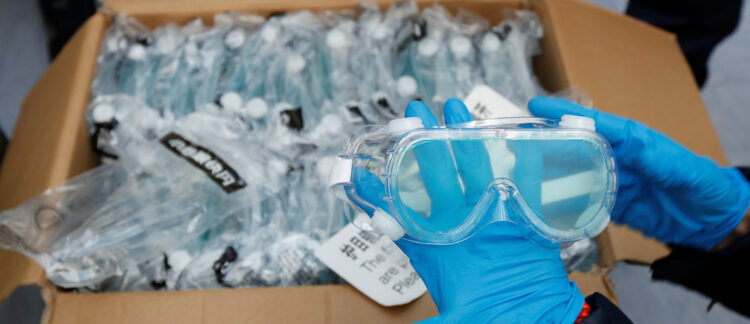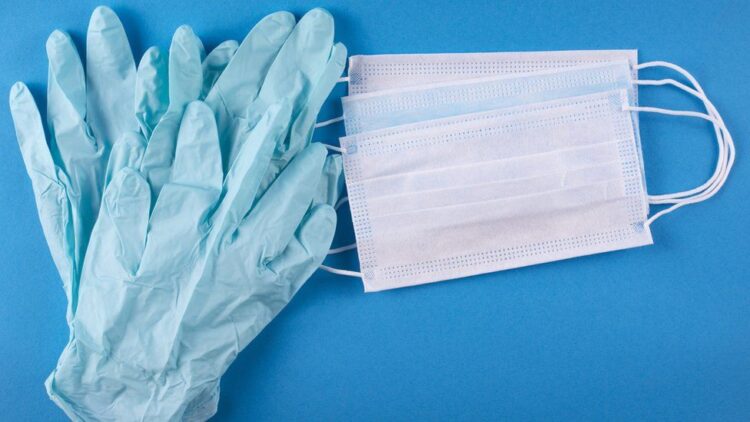The personal protective equipment (PPE) market size is expected to increase by USD 28.67 billion from 2019 to 2024, at a compound annual growth rate CAGR of 9%.
As stated in this personal protective equipment (PPE) market report, healthcare professionals, operators, and even investors can gain several valuable insights and deeper understanding of the post-COVID-19 impact on the overall PPE supply market.
The report broadly coversthe personal protective equipment (PPE) market division by product, several renowned markets vendors, and geographical locations, that is;
- protective clothing
- hand and arm protection
- protective footwear
- respiratory protection, and others
The geographical locations covered here include North America, Europe, APAC, MEA, and South America. The PPE supply market study also offers information on several top PPE supply vendors, including:
- 3M Co.
- Alpha Pro Tech Ltd.
- Ansell Ltd.
- Delta Plus Group
- DuPont de Nemours Inc.
- Honeywell International Inc.
- Kimberly-Clark Corp
- MCR Safety
- MSA Safety Inc.
- Sioen Industries NV., among others.
Page Contents
PPE Market: Key Drivers, Trends, and Challenges

Source: weforum.org
The strict work-related safety regulations are particularly driving the personal protective equipment (PPE) market growth; This may not be the case due to customer-related issues such as non-compliance, especially during the post-COVID-19 era. The research analysts focused on historical data, reasoned key market drivers, and the COVID-19 pandemic impacts on the PPE industry. This holistic PPE market analysis of the drivers will help construe end goals and improve marketing approaches to gain a competitive edge for big players to startups in the space.
Key PPE Market Driver
The increasing occurrence and frequency of transferrable biological hazards (organic matter and microorganisms harmful to human health) is a significant growth factor for the PPE market in the US and around the globe. The primary sources of biological hazards are viruses, bacteria, plants, animals, birds, and people.
The need to save people’s lives with contagious and infectious diseases increases the demand for PPE supplies, such as disposable gloves, PAPRs, respirators (N95 & KN95 face masks), to at-home COVID-19 tests, and more. The execution and approval of infection-control programs and practices in a variety of healthcare scenarios are endorsed to avoid Health associated infections (HAIs). Additionally, healthcare staff needs to use PPE, such as disposable gloves, isolation gowns, face masks, protective eyewear (goggles & glasses), and face shields, to reduce work-related infection transmissions that may result in treating patients.
Key Personal Protective Equipment (PPE) Market Trends
The rising circulation through brick & mortar retail supply stores and online sales channels is a PPE market trend that will likely impact and grow over the years to come. You can increase your sales of PPE supplies via the various e-commerce platforms, such as big-name sites like Amazon, MedicalExpo, and Alibaba, to up & coming healthcare startups like medical supply store Bttn.
- These ecommerce medical supply platforms help you reduce your overall PPE costs, (e.g., distribution setup and operational costs.)
- You can give your buyers great offers and discounts on products like disposable face masks and respirators – increasing the demand & purchases online too.
- The sales of PPE supplies used by healthcare staff to meet their immediate needs are expected to increase growth opportunities for the global PPE market.
Primary Personal Protective Equipment (PPE) Market Challenges
Low consumer compliance is deemed a significant challenge for the PPE supply market during the forecast period mentioned here. You may find it challenging to sell safety eyewear due to comfort and fit issues, whereby the eyewear gear doesn’t fit properly; hence users refrain from using them. This can add to your PPE supplies overhead costs too and excess inventory that may take the place of higher demand items required by staff and patients.
Additionally, fashion-conscious employees may not use a PPE that they don’t find appealing, giving employers a hard time in cases of an accident while on duty or problems related to strict compliance by the government. This has been the case with face masks. Although N95 respirators have been highly recommended, there have been supply shortages noted by healthcare professionals everywhere. From various geo-political conflicts, lingering effects from all of the COVID-19 lockdowns, major port closures and vessel backups, and more. From staff to everyday folks, cloth type breathable face masks become more commonplace in use but lacked the highest standards of protection one would better receive wearing an N95 face mask.
In addition to these challenges, the insights that companies can act upon on the trends and challenges will help companies evaluate and develop growth strategies for now though 2024 and beyond.
The Key Regions for Personal Protective Equipment (PPE) Market

Source: bbc.com
37% of the PPE supply market’s growth likely originates from North America throughout the forecast periods. The US and Canada are the key growth markets for PPE supplies in North America.
The demand for protective hand equipment is also very high in North America due to the region’s dominance in several industries, including automotive production, building, chemicals, and aerospace, thus facilitating PPE supply market growth with a consistent cadence. This market research report entails detailed information on the competitive acumen, promotion gaps, and regional breaks in store, which will help you create effective business plans.
The Bottom Line on PPE Supplies
The PPE supply market has been snowballing in growth due to the demand for a variety of PPE supplies from the healthcare industry and other sectors. You may need protective clothing if you work in industries that deal with chemicals and infections, construction, manufacturing, and oil and gas. Manufacturers are making industry-specific products, e.g., protective clothing for electrical hazards and fire resistance.
Several of the main PPE supply purchases by procurement teams at hospitals, doctors offices, surgical centers, to small and large businesses, construction sites, manufacturers, and others often include disposable gloves, medical respirators (N95 & KN95 face masks), disinfectant wipes and cleaners, hand sanitizers, PAPRs, and surgical masks, to isolation gowns, safety glasses & goggles.
As the market demand for procuring PPE supplies continues to increase around the globe, procurement teams really need to embrace using better technology, big data insights, and more to stay ahead of demand, supply chain issues, and more to ensure they have the PPE supplies they need in stock as needed.





